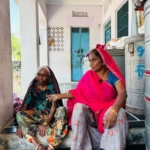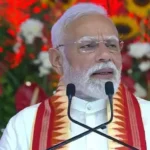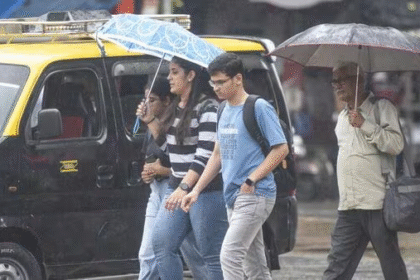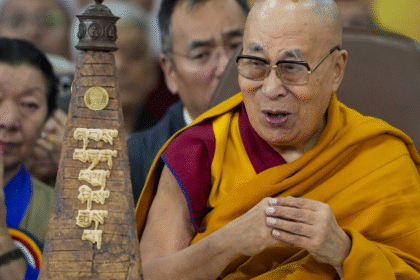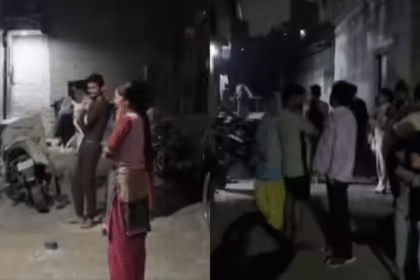Greater Noida Nikki Bhati Dowry Murder Case: Arrests, Encounter, and Police Interrogation
In August 2025, the streets of Greater Noida, one of India’s rapidly urbanising hubs in Uttar Pradesh, became the center of a crime story that shocked the nation. The murder of Nikki Bhati, a young woman allegedly killed over dowry demands, reignited deep-seated debates on women’s safety, patriarchy, and the continuing curse of dowry in Indian society.
What made the case stand out was not just the brutality of the act, but the dramatic chain of events that followed: the swift arrests of key accused, the husband’s encounter with the police, and intense interrogations that revealed disturbing details about greed, power, and gender violence.
The story of Nikki Bhati is not merely a crime report—it is a mirror reflecting India’s social contradictions: modern cities where women are educated and ambitious, yet still vulnerable to regressive practices rooted in centuries-old traditions.
The Victim: Who Was Nikki Bhati?
Nikki was described by friends and family as a vibrant, ambitious young woman in her twenties. Educated, hopeful, and deeply rooted in her cultural identity, she represented a generation of women who strive for balance—respecting tradition while carving independent futures.
Her marriage, according to relatives, was supposed to be a milestone of happiness. But beneath the surface lay simmering tensions—escalating demands for dowry, disputes over financial contributions, and cultural expectations that weighed heavily on her shoulders.
As news spread of her tragic death, the portrait that emerged was one of a life cut short not by chance, but by deliberate violence rooted in greed and societal complicity.
The Crime: A Timeline of Horror
The night of the murder remains etched in the collective memory of Greater Noida residents. According to initial reports:
- Early Evening: Neighbors allegedly heard raised voices from Nikki’s residence, suggesting a heated argument.
- Later that Night: Authorities were alerted after suspicious activity was reported in the area.
- Discovery: Nikki’s body was found under circumstances pointing to premeditated assault.
Police investigations quickly pointed to dowry-related harassment. Her husband and in-laws became the prime suspects, triggering a swift but complex criminal process.
The Police Response: Arrests and an Encounter
The case gained traction almost immediately, partly because of its gruesome nature and partly due to public outrage amplified on social media. Within days, the Uttar Pradesh police arrested several individuals linked to the case, including Nikki’s husband.
The story took a sensational turn when the husband was injured during a police encounter—a term often used in India to describe shootouts between police and accused criminals. According to official accounts, the encounter occurred when he allegedly attempted to flee during questioning. While police maintained that the encounter was a result of resistance, critics argued it raised questions about due process and accountability.
Interrogations and Emerging Revelations
As police interrogated the accused, disturbing details surfaced:
- Evidence of systematic dowry demands, including financial transfers and gifts.
- Testimonies from neighbors who had witnessed frequent quarrels.
- Traces of pre-planned conspiracy indicating the crime was not a sudden act of rage, but carefully orchestrated.
Investigators pieced together a chilling narrative of coercion, harassment, and violence that culminated in Nikki’s death.
The Dowry Curse: A National Epidemic
Nikki’s murder cannot be seen in isolation. Despite decades of legal reforms, including the Dowry Prohibition Act (1961) and stringent provisions under Section 304B of the Indian Penal Code, dowry-related deaths continue to plague India.
- Statistics reveal that, on average, more than 20 women die every day in India due to dowry harassment.
- Uttar Pradesh, where Nikki’s case unfolded, consistently records some of the highest numbers of such crimes.
- The persistence of dowry-related violence underscores the gap between law and social practice, where legality often bows before cultural acceptance of material demands in marriage.
Nikki’s case thus became more than a local tragedy—it symbolized the national failure to eradicate a practice that robs women of dignity, freedom, and life.
Media and Public Reaction
The case exploded across news channels and social media platforms. Hashtags like #JusticeForNikki trended, with thousands expressing anger, grief, and frustration. Feminist groups organized protests in Delhi and Lucknow, demanding stricter implementation of dowry laws and accountability for police handling of such cases.
The encounter of Nikki’s husband divided public opinion. Some applauded the police for swift justice, while others criticized the culture of extrajudicial methods, warning that true justice lies in transparent trials, not street-style retribution.
The Family’s Voice
Nikki’s parents and relatives spoke out with raw emotion. Her mother, in particular, gave heart-wrenching interviews describing how her daughter had confided in her about constant harassment. They revealed repeated attempts to reconcile with the in-laws despite dowry demands, highlighting the cultural pressure to “adjust” in marriage even when abuse is evident.
Their grief, magnified on national television, humanized the statistics and showed the lived trauma of families who lose daughters to a practice long declared illegal but socially entrenched.
Part 1 has laid the foundation of the Nikki Bhati murder case: the victim’s life, the crime’s brutality, the police’s controversial encounter, and the revelations of dowry harassment. More than a story of one family, it is the story of thousands of Indian women who continue to suffer at the hands of outdated customs masked as tradition.
The tragedy of Nikki Bhati is not an isolated incident. It falls within a grim continuum of dowry-related crimes that have plagued India for decades. Although India has some of the strictest anti-dowry laws in the world, the persistence of such cases highlights the gap between law and lived reality. Understanding this gap requires a closer look at the legal framework, landmark judicial interventions, and the systemic shortcomings that make dowry deaths a recurring national crisis.
The Dowry Prohibition Act, 1961
India formally criminalized dowry through the Dowry Prohibition Act, 1961. The law defined dowry as any property, valuable security, or gifts demanded by the groom’s side as a condition of marriage.
Key provisions included:
- Ban on Dowry: Direct or indirect demands were made illegal.
- Penalties: Imprisonment up to 5 years and fines were introduced.
- Applicability: The law extended across all religious and cultural groups in India.
Despite its bold intent, the Act was riddled with loopholes. Vague definitions, weak enforcement mechanisms, and lack of societal support made convictions rare. Dowry continued to thrive, disguised as “gifts” or “voluntary offerings.”
Strengthening the Law: IPC Provisions and Amendments
Recognizing the ineffectiveness of the 1961 Act, the government amended laws in the 1980s and 1990s to introduce stricter provisions under the Indian Penal Code (IPC):
- Section 304B (Dowry Death):
- Introduced in 1986.
- Applies when a woman dies within 7 years of marriage under suspicious circumstances linked to dowry harassment.
- Minimum sentence: 7 years; maximum: life imprisonment.
- Section 498A (Cruelty by Husband or Relatives):
- Deals with harassment, cruelty, or violence by the husband or in-laws.
- Non-bailable and cognizable, giving police authority to arrest without warrant.
These sections were designed to plug loopholes, shift the burden of proof onto the accused, and act as deterrents.
Landmark Judicial Interventions
Over the years, Indian courts have delivered significant rulings shaping dowry law enforcement:
- Satbir Singh vs State of Haryana (2021): The Supreme Court reiterated that dowry deaths must be probed with sensitivity, urging lower courts to avoid acquittals due to technicalities.
- Rajbir vs State of Haryana (2010): The Supreme Court directed trial courts to add Section 302 (murder) charges alongside 304B in dowry death cases, reflecting the gravity of the crime.
- Kans Raj vs State of Punjab (2000): Clarified that harassment need not be constant or physical; even mental harassment linked to dowry is punishable.
These judgments reinforced that dowry-related violence is not only a social evil but also a criminal offense of the highest order.
The Reality of Enforcement
Despite robust laws and judicial guidance, dowry deaths continue at alarming rates. Why?
- Underreporting: Many women, pressured by families or societal norms, hesitate to lodge complaints.
- Police Apathy: Law enforcement often dismisses complaints as “domestic disputes,” undermining the seriousness of dowry harassment.
- Social Stigma: Women who speak out risk being ostracized, leaving them with little support.
- Burden of Proof: While laws shift some burden to the accused, prosecution often struggles to establish direct links between dowry demands and death.
- Misuse Narrative: Accusations of misuse of Section 498A have led to hesitancy in arrests, weakening enforcement in genuine cases.
This cocktail of factors creates a climate where dowry laws exist strongly on paper but weakly in practice.
Uttar Pradesh: A Hotspot for Dowry Deaths
Uttar Pradesh, where Nikki’s murder occurred, consistently records some of the highest numbers of dowry-related crimes in India. National Crime Records Bureau (NCRB) data reveals:
- Over 2,000 dowry deaths annually in the state.
- An average of 5–6 deaths every day, many within just a few years of marriage.
Experts argue that the combination of deeply entrenched patriarchal norms, economic inequalities, and weak policing makes Uttar Pradesh particularly vulnerable. Nikki’s case, while shocking, tragically fits into a larger statistical pattern.
Legal vs Social Norms: The Wider Conflict
The law alone cannot change entrenched cultural practices. The dowry system thrives because:
- Families view marriages as financial transactions rather than partnerships.
- Women are seen as economic burdens, making dowry a way of “compensating” grooms’ families.
- Communities normalize “gifts” as a sign of respect, blurring the line between voluntary offerings and demands.
Thus, while the law criminalizes dowry, social acceptance often shields perpetrators from moral condemnation, allowing the cycle to continue.
The Case of Nikki Bhati in Legal Context
Placing Nikki’s case within this legal and social framework reveals systemic failures:
- Despite decades of legal reforms, dowry demands were still normalized within her marriage.
- Harassment escalated into violence unchecked, suggesting a lack of timely legal intervention.
- Even after her death, the case gained traction primarily due to media pressure, not proactive enforcement.
This illustrates how law, culture, and enforcement mechanisms remain misaligned, costing lives like Nikki’s.
] has mapped the legal architecture of India’s fight against dowry—from the 1961 Act to modern-day judicial rulings—while exposing why these measures often fail in practice. Nikki Bhati’s case is a painful reminder that laws are only as strong as the institutions and societies that enforce them.
The First Response: Police Registration of Case
After Nikki’s death, her family lodged a complaint citing dowry harassment and violence. Police promptly registered the case under:
- Section 304B IPC (Dowry Death)
- Section 498A IPC (Cruelty by Husband and Relatives)
- Dowry Prohibition Act provisions
The speed of registration reflected mounting public pressure and media coverage, rather than systemic efficiency. In many dowry death cases, FIR registration faces delays, but Nikki’s case immediately gained attention given her young age, urban setting, and the brutal nature of the incident.
Arrests of In-Laws
Soon after the FIR, police arrested Nikki’s mother-in-law and other family members, accusing them of abetting harassment and creating the environment that led to Nikki’s death.
- Interrogation Focus: Investigators pressed them on dowry demands, past incidents of abuse, and their role in covering up the crime.
- Legal Strategy: Police invoked provisions making abettors equally culpable, to prevent family members from distancing themselves from the crime.
The arrests sent a message: dowry-related abuse would not be dismissed as a “private matter.” Yet, as often happens, family members insisted they were innocent, framing the case as a “marital dispute gone wrong.”
The Hunt for Nikki’s Husband
Nikki’s husband, named as the prime accused, initially went on the run after her death. Reports suggested he attempted to evade arrest by shifting locations, heightening the drama around the case.
- Police Surveillance: Mobile tracking, informant networks, and CCTV trails were used.
- Community Pressure: Posters were distributed and checkpoints tightened, signaling urgency.
The pressure campaign was successful—police located him within days.
The Encounter: A Controversial Chapter
When police finally confronted Nikki’s husband, the situation escalated into what has become a highly debated episode: the encounter.
The Official Version
- Police claimed that when they attempted to arrest him, he resisted, allegedly trying to snatch a weapon.
- In the ensuing clash, police opened fire, injuring him.
- He was taken to hospital under custody, while police framed it as a “necessary act of self-defense.”
The Skeptical View
Human rights advocates and some legal experts raised questions:
- Was the encounter staged to project police efficiency?
- Did authorities use “encounter justice” as a shortcut instead of due process?
- Could this undermine the judicial trial process, where evidence must be weighed impartially?
The encounter became the center of public debate: some hailed it as “instant justice” against a dowry killer, while others condemned it as an extrajudicial act that erodes the rule of law.
Police Interrogation and Case-Building
Following the arrests, police intensified custodial interrogation.
- Key Interrogation Themes:
- Sequence of harassment Nikki faced.
- Escalation of dowry demands after marriage.
- Circumstances leading directly to her death.
- Role of each family member in abetment or cover-up.
- Evidence Collection:
- Digital messages and call records suggesting harassment.
- Statements from neighbors and friends who witnessed Nikki’s distress.
- Medical examination reports confirming injury patterns consistent with abuse.
This phase was crucial for framing a strong charge sheet to withstand trial.
Encounter vs Justice: A Wider Debate in Uttar Pradesh
The Nikki Bhati case reflects a pattern in Uttar Pradesh policing—where encounters are frequently used as a tool of law enforcement.
- The “UP Encounter Model” has gained notoriety, with hundreds of alleged criminals killed or injured in such operations over the past decade.
- Supporters argue it boosts deterrence, especially in cases involving heinous crimes like dowry deaths, rapes, and murders.
- Critics warn it sets a dangerous precedent, where police become both executioner and judge, bypassing courts.
In Nikki’s case, the encounter polarized opinion: while Nikki’s family welcomed it as a swift act of justice, legal experts urged caution, emphasizing the importance of trial and due process.
The Human Side of the Investigation
Beyond police files and courtroom provisions lies the raw grief of Nikki’s family. Each arrest and the encounter of her husband brought a temporary sense of relief, but it could not erase their loss. Their demand was clear: not just punishment, but a systemic change that prevents other young women from suffering the same fate.
If the police investigation and arrests formed the procedural backbone of the case, the media and public response served as the emotional and political catalyst. Nikki Bhati’s death was not just a local crime story—it became a national talking point on dowry culture, women’s safety, and the need for accountability. In Part 4, we examine how traditional media, digital platforms, and public protests combined to pressure authorities, amplify Nikki’s story, and raise broader questions about justice in India.
Traditional Media: Spotlight on a Dowry Death
From the moment Nikki’s death was reported, mainstream outlets—television news, online portals, and print media—began covering the story with intensity.
- Breaking Headlines: Most media platforms led with sensational yet empathetic headlines, framing Nikki as a victim of both patriarchal violence and dowry greed.
- Detailed Updates: Outlets like News18, NDTV, and Times of India provided rolling updates on the arrests, encounter, and police statements.
- Human Interest Angles: Many reports highlighted Nikki’s background, her family’s pain, and the injustice of losing a young woman to an outdated social evil.
This relentless coverage ensured the case didn’t slip into obscurity—a fate that often befalls similar cases in smaller towns.
Social Media: Outrage Amplified
On platforms like X (Twitter), Instagram, and Facebook, the Nikki Bhati case went viral.
- Hashtags: Hashtags such as #JusticeForNikki, #EndDowryDeaths, and #NikkiBhatiCase trended, creating a digital protest.
- Citizen Voices: Influencers, activists, and ordinary citizens condemned the incident, sharing personal stories of harassment and abuse linked to dowry culture.
- Amplification: Videos of Nikki’s grieving family circulated widely, putting emotional weight behind the demand for justice.
Social media not only amplified outrage but also shaped the narrative of urgency—pressuring police, politicians, and even courts to act decisively.
Public Protests and Community Response
Beyond online campaigns, Nikki’s case sparked on-ground demonstrations.
- Women’s Rights Groups: Feminist organizations organized candle marches and protests in Greater Noida and Delhi.
- Student Activism: University students held vigils, framing Nikki’s death as part of a larger epidemic of gender violence.
- Local Solidarity: Neighbors and community members rallied around Nikki’s family, ensuring they had both moral and logistical support in pursuing justice.
These public actions echoed the protests seen in other high-profile cases, where collective grief transforms into collective action.
The Politics of Media Trials
While media coverage played a vital role in mobilizing attention, it also sparked debates about “media trials.”
- Positive Impact: Continuous coverage ensured transparency in the investigation, preventing police from delaying or diluting charges.
- Risks: At times, excessive sensationalism risked compromising the objectivity of the case. By portraying the accused as guilty before trial, media narratives sometimes blurred the lines between justice and public vengeance.
The encounter of Nikki’s husband further complicated the picture. Media divided into two camps: one praising police efficiency, the other questioning extrajudicial actions.
Feminist Discourse: Turning Personal into Political
Nikki’s story reignited feminist discussions on dowry, patriarchy, and systemic violence against women.
- Dowry as Violence: Activists argued that dowry deaths should not be dismissed as “family disputes” but treated as gendered violence and murder.
- The Symbolism of Nikki’s Case: For many, Nikki became a symbol of thousands of women silenced by dowry but whose names never reach headlines.
- Policy Demands: Feminists used the case to demand stricter enforcement of dowry laws, community awareness programs, and stronger institutional support for women facing harassment.
Public Pressure on Authorities
Ultimately, the media and public response created a feedback loop:
- Coverage → Public Outrage
- Public Outrage → Political Pressure
- Political Pressure → Police Action
- Police Action → More Coverage
This cycle ensured that the case remained alive in public consciousness, unlike countless dowry deaths that fade into silence.
Also Read : Rajasthan Digital Governance: Companies Gain While Elders Lose Pensions



